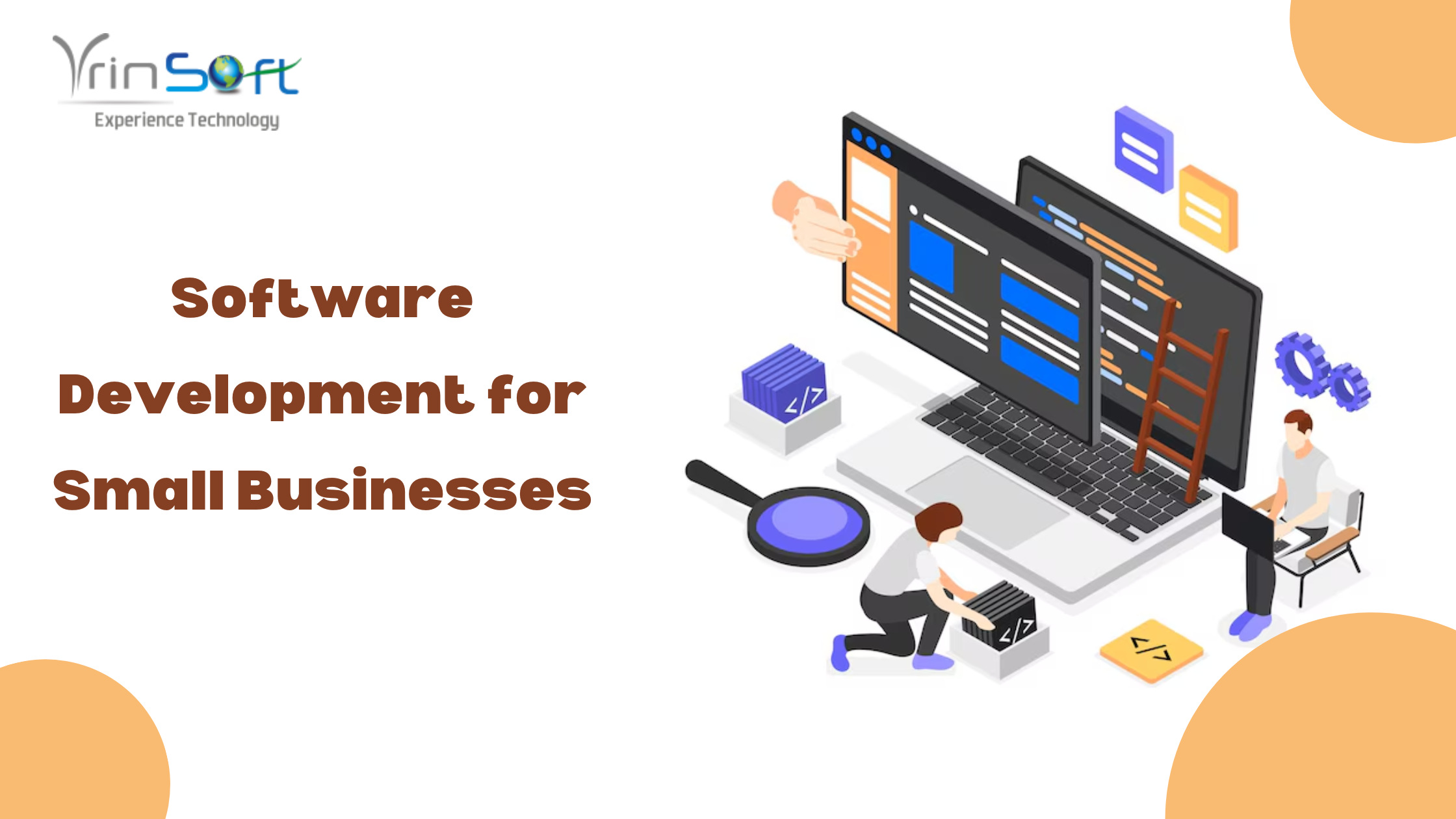With millions of businesses competing in the market, Software for small businesses and startups need to stand out to survive. Developing software is a good place to start, as it only has upsides. While off-the-shelf software is a much cheaper option, we cannot rely on it for future requirements, and in the long run, it has proven to be expensive.
That’s why most businesses choose to invest in software development in Sydney. However, developing software is an expensive endeavour that requires a large initial investment, but can we lower the cost? Yes, in this blog, we have provided various ways a small business can tighten its budget and build software that can enhance its productivity.
From the planning stage to development strategies and tools and how to maintain the software in the long run, we have explained various ways and factors to consider that will save you time and the cost of software development.
Planning & Prioritization: Laying the groundwork for success
A successful software development project for a small business starts with meticulous planning and prioritization. Here are five key strategies to consider before diving into coding,
Understand Your Project Scope and Vision
One of the most important factors small businesses need to consider is to understand the project scope and vision from the outset. Once you know your needs and requirements, you can build a better software solution. Most businesses want to add more features and functions, thinking that it will help in the future, which adds to the cost of software development.
Instead, focus on features that will help your business or customer right away. With this targeted approach, businesses can save development time, which will result in budget-friendly software development for small businesses in Sydney, Australia.
Go for User-Centered Design
When developing software, it’s important to involve your users, which means asking your employees. One way to do this is by using user-centred design (UCD) principles throughout the development process. This means conducting user research, such as interviews, surveys, and usability testing, to understand their needs, workflows, and pain points.
When we prioritize the user experience (UX) from the beginning, the software can be designed to be intuitive, easy to use, and directly address the problems it’s meant to solve. This user-centric approach can lead to faster implementation. This means that to reduce time for training and understanding, your employees can start working with them easily. This will save time and resources, especially for small businesses.
Break Down Work into Manageable Tasks
Developing software is not a small feat, and it’s wise to break down large, complex projects into smaller, more manageable tasks that can help you stay organized and focused. By using a work breakdown structure, you can estimate development effort more accurately.
Your software development agency in Sydney will assign specific tasks to team members and track progress efficiently. A well-defined WBS also helps identify dependencies between tasks, ensuring a smooth development flow. Remember, breaking down your project into smaller tasks can make a big difference in your overall success, duration and the cost of developing software.
Develop a Realistic Development Timeline
Nothing goes according to plan, so always keep a buffer period while estimating the software development timeline. That’s why you should expect a realistic timeline from your developers. You can ask other businesses in your industry how long it takes to build software.
However, as a small business, make sure to understand every aspect of the development process first so that you can ask Software developers to reduce the timeline and save costs. There are many factors that affect the budget, make sure to learn more about how much does custom software development cost in Australia and other detail.
Establish Clear Communication Channels
Effective communication is essential for every project to succeed. Create common channels of communication with all parties involved with the development process, including your team and any outside developers you are collaborating with.
Regular meetings, progress reports, and allocated outlets for debates and feedback are a few examples of this. There are fewer misconceptions that might cause delays or rework the more in agreement everyone is. Clear communication reduces rework, which means saving costs for developing software for your business. Remember, in dedicated software development team structure, communication is what makes them better.
Development Strategies: Building Smart for Small Businesses
Building smart software for small businesses goes beyond just writing code. It’s about adopting a strategic approach that prioritizes cost-effectiveness while delivering a powerful and efficient product. Here are five key strategies to consider:
Leverage Existing Tools and Integrations
When developing custom software, you can save time and resources by taking advantage of existing tools and integrations. This means using software solutions that can integrate with your custom software, such as marketing automation tools and accounting platforms. By doing so, you can leverage the functionalities of these established tools and create a seamless user experience within your custom software.
Choose Open Source and Low-Code Tools
You can use open-source libraries and frameworks to help speed up development time and reduce costs. These resources are free or low-cost and offer pre-built functionalities that can be used in your custom software. You can also explore low-code development platforms that allow people with less coding expertise to build simple applications. This frees up more experienced developers to focus on more complex functionalities.
Modular Design and Agile Development
When designing your software, consider breaking it down into smaller, self-contained modules. This approach allows for independent development, testing, and deployment. It also allows you to prioritize and release modules based on your business needs and budget. Agile development methodologies like Scrum and other custom software development methodologies can help make this process even more cost-effective. By developing and delivering features in short sprints, you can get continuous feedback and quickly adapt your development direction, minimizing wasted effort.
Cloud-Based Development and Deployment
Consider using cloud computing to develop and deploy your software. This will provide a scalable and cost-effective solution without the need for expensive upfront hardware infrastructure. Cloud application development services providers offer pay-as-you-go models that allow you to scale your resources up or down based on usage, resulting in significant cost savings for small businesses. Also, cloud platforms often come with built-in security features, disaster recovery options, and automatic software updates, reducing your operational overhead.
Prioritize Automation and Testing
Automating repetitive tasks in development can save time and effort. Use tools that automate testing, deployment pipelines, and code documentation. This frees up developers to focus on creative problem-solving and core development tasks. A strong testing strategy ensures a high-quality product with fewer bugs. By focusing on automation and testing, you can reduce the risk of rework and delays, which ultimately contributes to a cost-effective development process.
Optimizing the Process for Cost-Effective Development
Building smart software goes hand-in-hand with employing the right tools and techniques to streamline the development process. Here’s a breakdown of key approaches that can significantly improve efficiency and cost-effectiveness for small businesses:
Utilize Automation Tools
Automating repetitive tasks such as testing, data entry, and code deployment can help save valuable development time. By investing in automation tools, you can streamline these processes and focus your developers on more important tasks like building new features and functionalities.
With automation tools, you can test your software automatically as soon as you make a change, catching bugs early on and preventing costly delays. You can also explore tools that automatically generate reports and documentation, saving you time and ensuring everyone on your team has access to the latest information.
Effective Project Management
To ensure a smooth development process, it is essential to have clear communication and organization. For small businesses, project management platforms offer features like task boards, Kanban boards, and real-time chat functionalities that can help. When you go for top software development company in Australia, they will offer effective project management which will save your budget.
With these tools, your team can easily track progress, collaborate effectively, and identify dependencies between tasks. Additionally, project management tools often provide reporting dashboards that offer valuable insights into project budgets, timelines, and potential roadblocks. This transparency empowers you to make informed decisions, prioritize tasks strategically, and keep your project on track.
Continuous Integration & Delivery (CI/CD)
Automated software development and deployment can help you release new features and updates faster and more reliably. Imagine a system that automatically builds, tests, and packages your software each time developers make code changes. This helps identify and fix bugs early on, preventing them from causing costly delays in later stages of development.
Additionally, automated deployment can efficiently push updates to production environments, providing users with the latest features and bug fixes as soon as possible. Employing this Continuous Integration and Continuous Deployment (CI/CD) practice can streamline development, reduce delays, and improve the software development and deployment process.
Version Control Systems
When multiple developers work on the same software project, it can lead to confusion and errors. To avoid this, version control systems like Git act as a central repository that tracks all changes to the codebase over time. This creates a historical record of every modification made to the software, allowing you to revert to previous versions if necessary.
By doing so, everyone works on the latest codebase and minimizes the risk of conflicts or lost work. In addition, version control systems allow for collaboration between developers in different locations, facilitating teamwork and efficient software development.
Beyond Development: Ongoing Maintenance
The development process doesn’t end with the initial launch. To ensure your software remains valuable and competitive in the long run, you need a plan for ongoing maintenance and updates. Here are three key considerations:
Plan for Long-Term Support
It’s important to budget to maintain your software after it’s launched. This includes fixing bugs, addressing security issues, and providing technical support to your users. Think of it like investing in the ongoing health and performance of your software.
Without proper maintenance, small bugs can turn into big issues that negatively impact user experience and hurt your business reputation. Make sure to allocate resources for maintenance from the beginning so your software remains a reliable tool for your team. For example, if you are developing medical device software, security is paramount, to keep patient data safe.
Go for a Data-Driven Approach
When building software for your business, it’s important to make sure it helps your business grow. To do this, you need to gather feedback from your users through surveys, support tickets, and interviews. This feedback will help you identify what needs improvement and prioritize new features based on user needs and market trends.
Don’t hesitate to make changes as needed. For example, if you find that users need more features in your financial software, you can add them accordingly. Keep track of usage statistics and user feedback to identify areas where your software can be optimized to better serve your target audience. By taking a data-driven approach, you can make sure your software stays relevant and valuable to your users.
Maintain Security with Patch Management
Cybersecurity threats are always changing. To keep your software secure, it’s important to have a strong patch management plan. Software developers frequently release updates to fix security issues. To stay protected, you should install these updates as soon as they’re available. Thats why most business is integrating blockchain development with their software, to create an extra layer of security.
It’s also a good idea to schedule regular security audits to identify any weaknesses in your software’s security. By prioritizing patch management and security audits, you can reduce the risk of data breaches and protect your business from cyberattacks.
Conclusion
The Australian software market is buzzing with revenue and opportunities as more business are developing their own software, instead of relying on ready-made software, which is cost-effective at first but cannot fulfil the requirements in the long run.
Software development for small businesses has become a necessity as off-shelf software cannot be an alternative to their unique needs and future demands. While custom software development is the first choice of every small business, it needs a bigger investment.
That’s why we have provided some of the easiest ways to build software for startups and small businesses in a cost-effective way. We have provided various ways small businesses can save budget while developing software.
This guide will be useful for small businesses that are looking to invest in a custom software development company in Australia and create their own solution. With their own software, they streamline and automate work while keeping their data secure.
Why Choose Vrinsoft Pty Ltd to Build Software for Small businesses?
With over a decade of experience in the Australian software market, we have a better understanding of what small businesses need. We have worked with many startups and small businesses and helped them create software that integrates easily with their legacy software, maintains productivity, and future-proofs their investment. Our expert software developers have a deep understanding of various industry needs and build software solutions that are suitable for them. Consult with us today and let us build software that drives growth and helps you compete in the market.
FAQ
How can I find a reliable software development team for my project?
Do your research and look for a development teams with experience building software for small businesses. For that, you need to read online reviews and testimonials from past clients. Ask your software development team about their development methodologies, project management approach, and security practices. Vrinsoft is a leading software development company in Melbourne, we can help you build software for your small business.
How long will it take to develop my software?
The time it takes to develop software for your small business can vary depending on the project’s scope and complexity. However, dividing the software into smaller, modular components can help you achieve quicker results and deliver features in shorter sprints. Consult with us today and let us provide an accurate timeline for the software development.
What are some of the biggest mistakes small businesses make when developing software?
To create effective software, it is important to avoid common mistakes. These include focusing on too many features instead of essential functions, not considering user needs, and overlooking security. You also need to find a reliable and trusted software development partner, who can deliver the project in time and under budget.
How can I ensure my software remains valuable after launch?
Your software needs regular maintenance and updates to work efficiently and stay secure. It’s important to plan for support after launching your software, which includes fixing bugs, updating security, and assisting users. also, use feedback from users and data analytics to improve your software and adapt it to changing business needs.
How much does it cost to develop software for my small business?
There is no fixed cost of developing a software for your small business or startup. It depends on the complexity of the software and how many features you want to include. Software development in Australia for small businesses can range from AUD $12,000 to AUD $220,000. Connect with us today and we will provide you with estimated cost of software development for your small business,





